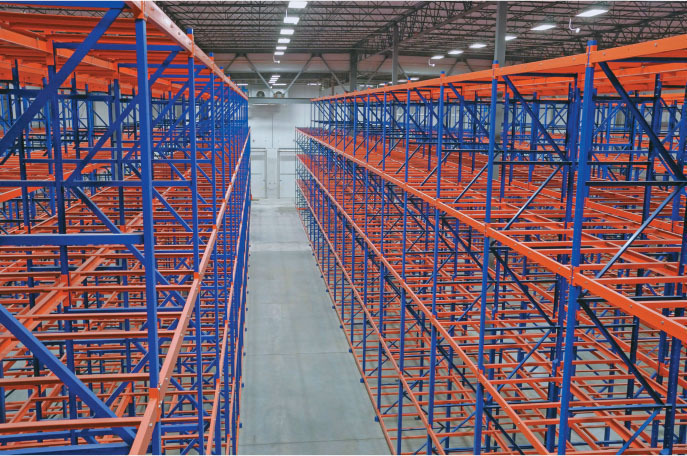Safer Handling
BY TOM GRESHAM
Videos of rack failures in warehouses and distribution centers are a staple of some corners of social media. Both horrifying and mesmerizing, the worst of the rack-related accidents are chain reactions of collapse that are dangerous to workers and lead to massive financial losses of lost product.
“Failures don’t happen very often, but when they do, they can be catastrophic,” said John Krummell, president and CEO of MHI member Advance Storage Products and outgoing president of the Rack Manufacturers Institute, an MHI industry group of industrial rack solutions suppliers.
Awareness of the vital nature of rack system safety has grown in recent years, and has led to more sophisticated industry-wide approaches to rack systems—approaches that are helping to prevent hazardous and costly accidents such as those depicted in the videos. John Schmidt, CEO of MHI member Rack Builders and incoming vice president of RMI, said RMI has taken a prominent role in increasing education about rack safety issues and helping to ensure that they are no longer overlooked or misunderstood.
“In the last few years, there has been a lot more public awareness, owner awareness and user awareness of the importance of rack safety,” Schmidt said.
Krummell said a particularly important development is the broader recognition today that a pallet rack system is an engineered structure that should be designed to each unique facility—and not a “boilerplate” product that can simply be ordered from a catalog and installed. “You really need to have engineering input when you are scoping and setting a system up,” Krummell said.
“The big trend the last 10 years is the focus to design systems engineered to each specific job site,” he said. “One of the things we’re in the process of doing in the industry is limiting the use of load tables and catalog-type approaches because in the majority of cases, the new building codes don’t allow for that.”
Schmidt said building codes related to racks have grown stricter over the years, and “more owners are adhering to those codes.” He said it has become much less common for racks to be built and installed without a permit.
“As codes have evolved and have gotten stricter, people have seen how seismic events affect racks. They’ve seen that you can’t just eyeball it—you can’t just go off a published load table,” Schmidt said. “Each unique situation has to be engineered for the configuration of the rack and the environmental conditions of the site, especially in high-seismic areas like California.”
 MHI Solutions Improving Supply Chain Performance
MHI Solutions Improving Supply Chain Performance
